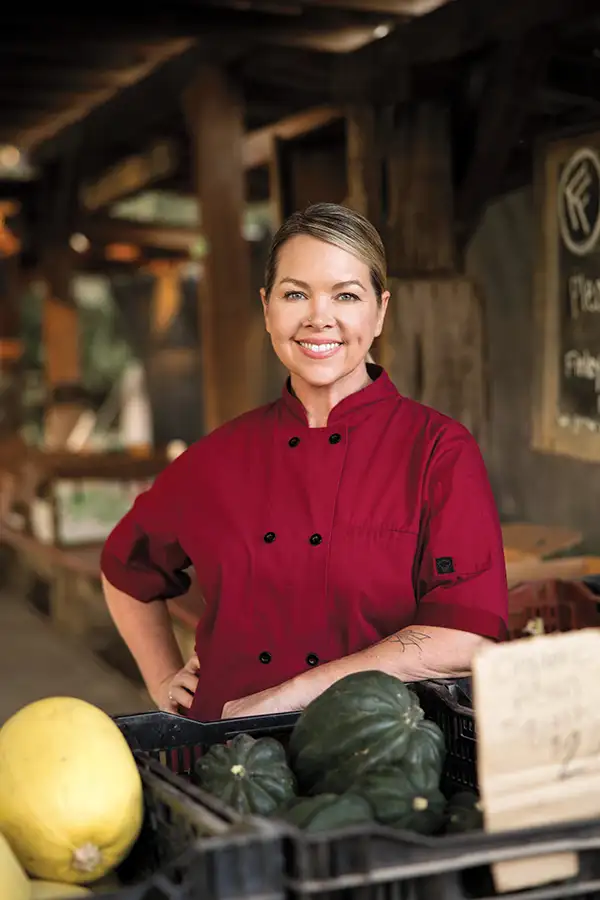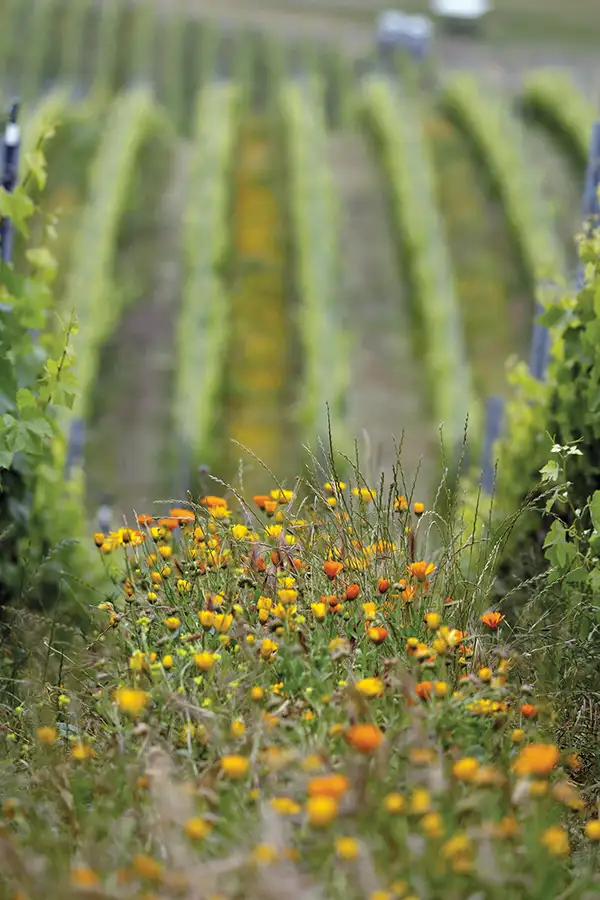Growing Resilience: Community Gardens Hold Space for More Than Plants
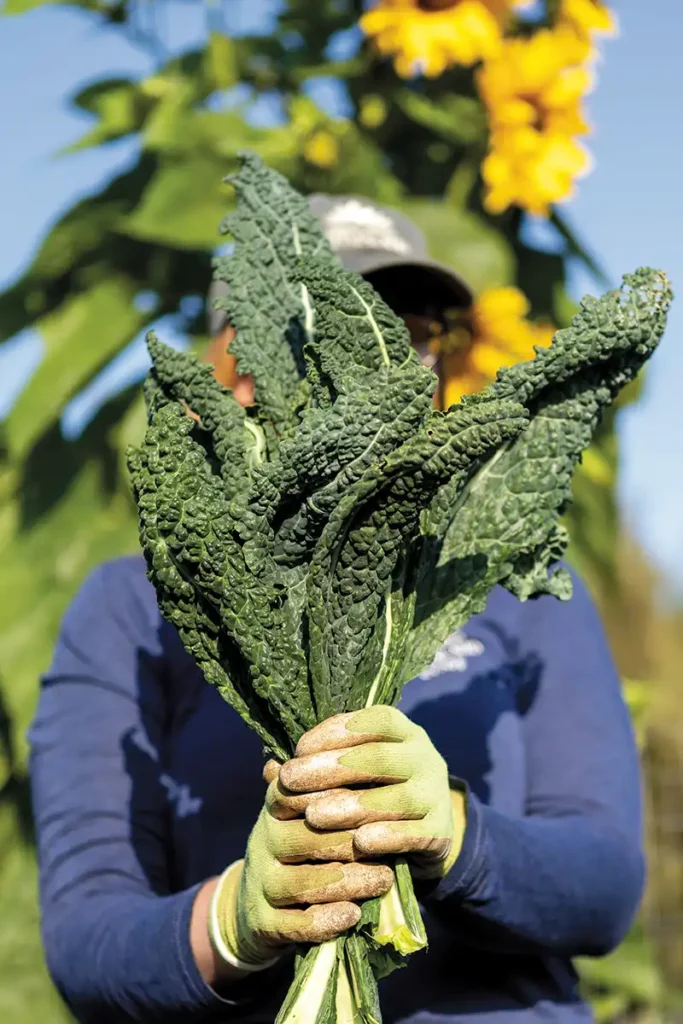
There is a lot to worry about these days. And yet despite all the chaos in the world, the sun still rises and the warm summer weather produces peak blooms and ripe fruit—as has been true for as long as there have been plants on this Earth.
I had the privilege of being the garden manager at Trinity Gardens during some historic times: when we collectively as a country, as a city, were forced to grapple with a new restricted way of life during the early years of Covid. It was a life that often felt smaller—safer spent indoors and online rather than in person. The garden for me, and so many of the volunteers, plot holders and neighbors, was a priceless slice of normalcy in a world that felt turned upside down.
During those times of grieving and uncertainties, life in the garden continued, even flourished. People walked their dogs, kids rode their bikes around the church parking lot. With much of our social calendar emptied, it became clear how important access to outdoor spaces are, and how important community is to us.
Where the garden is now was once Trinity Lutheran Church’s volleyball courts. A group of church members, neighbors and gardeners from the community made a plan with a simple goal to grow food together. Since its debut in March of 2012, there is now a thriving garden complete with bananas, chickens, individual and communal growing spaces. It welcomes hundreds of school children on field trips each year, while dedicated volunteers help grow, harvest and distribute thousands of pounds of produce to local food organizations. We aren’t producing enough to feed anyone three square meals a day, except for the resident gophers and voles, but we are telling the people in our community, “We see you and we care about you.”
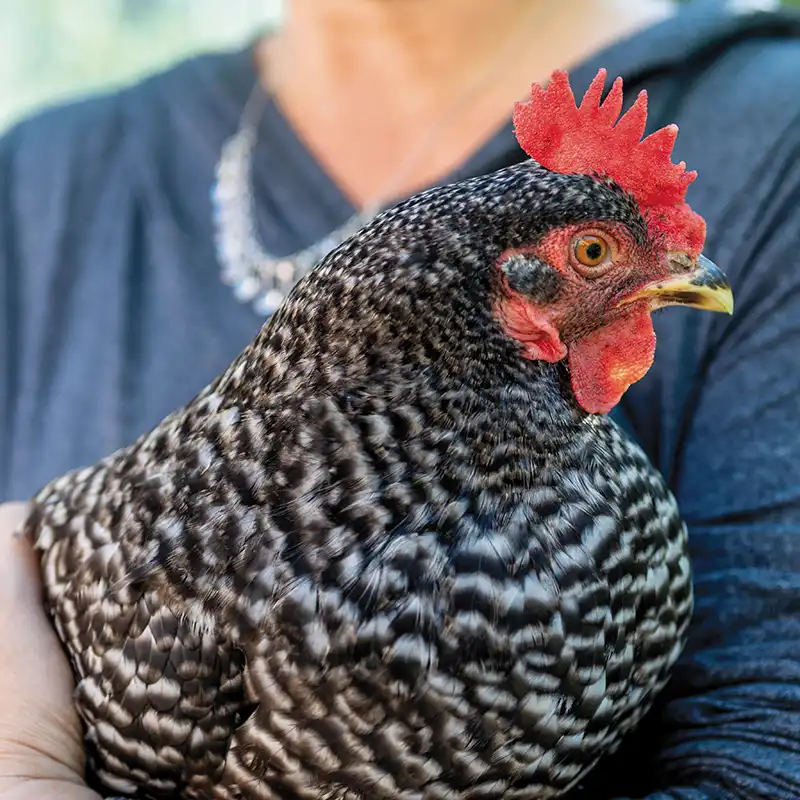
I am not saying that gardens are here to fix all of our problems. Yes, they give us opportunities to get outdoors, exercise, grow produce—all of these things we know are good for us, yet are often the first things to get dropped when our schedules get busy. But to have the ability to bring fresh oranges to friends who have suffered loss, or to chat with the church cleaner in the parking lot on the best way to eat bananas per his culture’s cuisine (boiled like potatoes, unpeeled still green), or to see someone who has never eaten a passion fruit try the alien-looking seed pods for the first time, these are moments where we can show up for one another in small ways that still may be remembered years later.
In America and across the globe, public health experts warn of the growing impacts of a loneliness epidemic. Even with technology connecting us to more people than ever before, a growing number of us are feeling burnt out and isolated. Community gardens are some of the few places left that allow people to freely connect to one another. You may have time to volunteer weekly or just sporadically. Know this: Time spent in a garden is a gift you can give yourself.
Community gardens also provide an accessible foundation for community engagement, which strengthens our individual and collective resilience. That might look like parents spending a little extra time during pickup to enjoy their school garden with their kids; Eagle Scouts taking a weekend to build planter boxes; college students coming together to grow for their campus food bank; or signing up for one of the Santa Barbara Bucket Brigade garden volunteer days. To be able to grow alongside some truly talented and knowledgeable gardeners, in a forgiving climate such as our own, is such a gift, and a reminder that there are moments of awe and connection all around us—just waiting to be noticed.
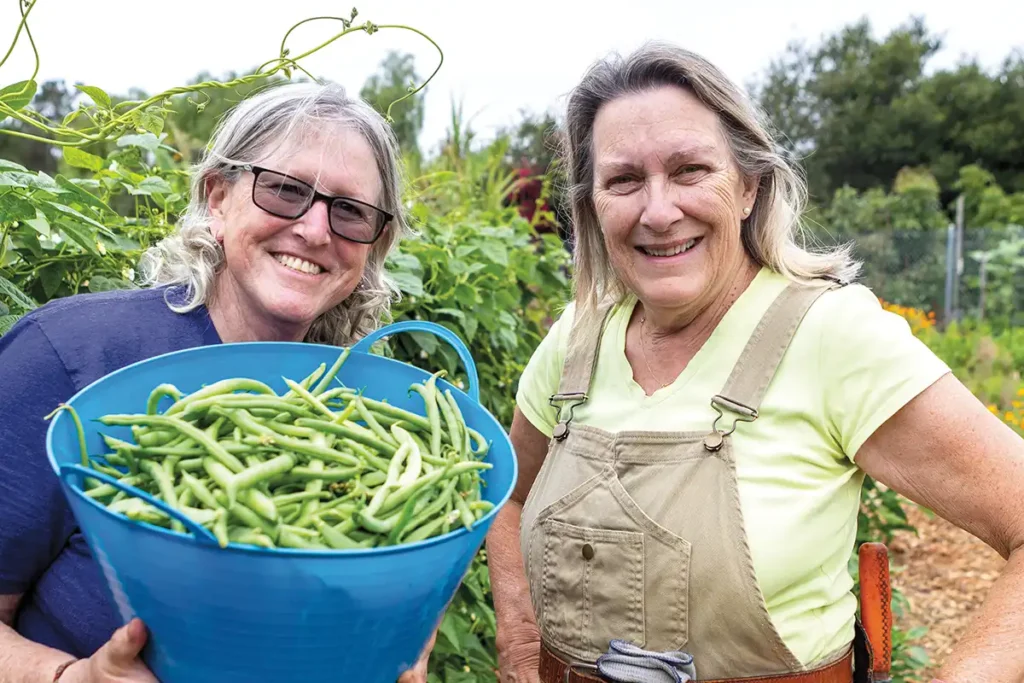
For this summer—or any season, really—let’s give a little extra love to Mother Earth and all those who support the forces that makes our community. Trinity Gardens and community gardens throughout our county are testaments to the power of people connecting to create third places: spaces outside of our home and work where we can gather to share the hardships and to enjoy the fruits of our labors.
RESOURCES
For a guide to community gardens around Santa Barbara County, please visit our website: Santa Barbara County Community Gardens.





